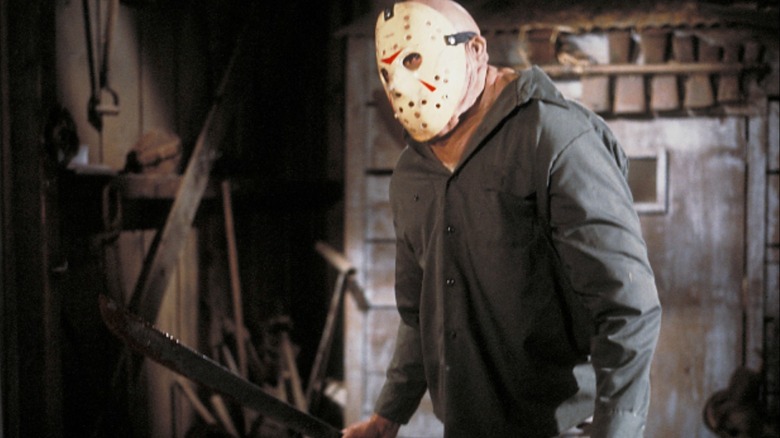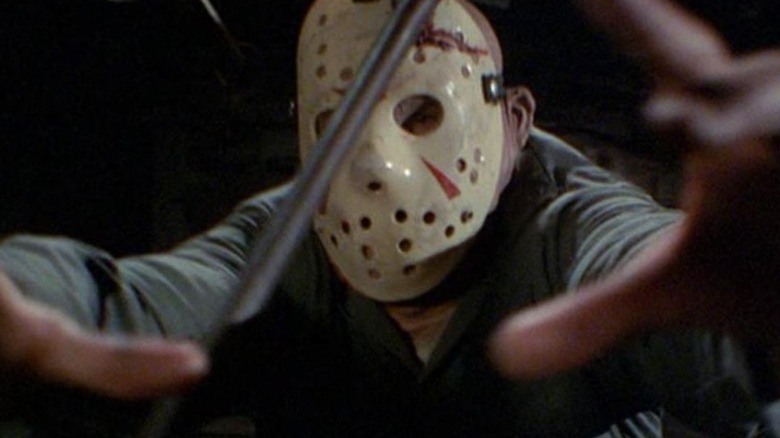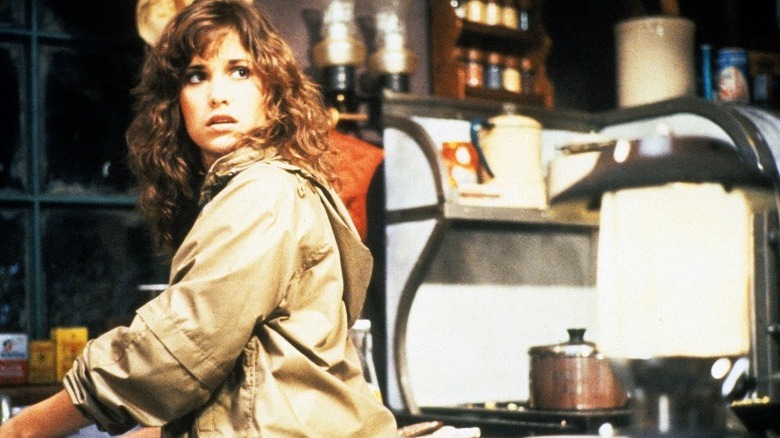Creating Friday The 13th's 3D Sequel Was A Challenge For Director Steve Miner
The "Friday the 13th" franchise has 12 entries in it so far, if we are to count 2003's franchise crossover film, "Freddy vs. Jason." The success of the first two films in the franchise helped solidify the mythos of Jason Voorhees as a slasher villain, and it was up to 1982's "Friday the 13th Part III" to finish the trilogy on a resounding note. This obviously did not end up being the case, as the franchise spawned multiple entries that furthered Jason's legacy over the years. However, the franchise's longevity cannot be attributed to the success of "Part III." While the film performed well at the box office, it received negative critical reviews for its shoddy kills and rehashed "slash n kill" routine.
"Part III" director Steve Miner was aware of the challenges of filming this particular installment from the get-go. The film was supposed to follow a traumatized Ginny Field (Amy Steel), who survived Jason's attacks in the second installment, but the storyline was abandoned after Steel refused to reprise her role. As a result, Miner had to change the storyline to a group of friends traveling to a cabin near Crystal Lake, where a wounded Jason (Richard Brooker) goes on a killing spree.
However, the biggest challenge for Miner was dealing with the 3D aspects of the film, which was a first for the franchise. As the technicalities involved in making a 3D film were imperfect at the time, the creators behind "Friday the 13th Part III" had a tough time figuring out what worked best for the slasher sequel. Here's how Miner and his team navigated this aspect.
The 3D effects in Part III were wonky for a reason
The concept of three-dimensional images has been around since the 1800s, but the 1980s saw a revival of the concept in mainstream cinema. Unfortunately, this enthusiasm to offer a unique moviegoing experience was not backed by state-of-the-art 3D systems that could smoothly translate 2D action sequences into convincing 3D shots. Take "Amityville 3-D" as an example: moviegoers were given polarized lenses for an enhanced experience, but the lenses were a total mismatch for the film, as they made it look skewed and distorted on screen. The same can be said about "Jaws 3-D" — all you have to do is watch this scene, and imagine how gimmicky it must have felt for those who watched it in 3D.
Miner spoke to Fangoria about the issues that come with 3D technology in the horror magazine's 21st issue. The director explained the 3D systems were "all difficult" to navigate, so the only option was to choose a system that posed the least amount of problems during production. He said:
"There's no state of the art where 3-D is concerned because all the systems are from backyard inventors who are piecing them together. We felt that the Marks system would give us the least problems during production, and would actually be the easiest to use, and I don't think that was the wrong decision. I think It worked out very well."
Although the 3D effects in "Part III" are not atrocious by any means, it does little to enhance the atmosphere or visuals in any way. Miner acknowledges this by adding that a "really good 3-D system [is] yet to be invented" and that he would have liked to apply the technical know-how in a better way in the future.
A meat cleaver flying right at you is a scary thing
Miner also mentioned in his Fangoria interview that "Part III" was shot on an Arriflex camera using a Marks 3-D system, which made it difficult to line the shots up with the 3D effects. As that was the best option available at the time, Miner and his team had to spend hours making sure that objects were not out-of-focus in 3D, and that the aspects that did pop out contributed to the strength of some sequences.
While "Part III" fails to capture the raw terror of the first two installments, it does have its strengths. For one, the film established Jason's signature hockey mask, which is an essential part of his mythos now. Apart from this, the ending nightmare scene is genuinely unsettling to this date, and it must have been terrifying to see an undead Pamela Voorhees rise out of the water and grab the final girl in 3D. What "Part III" does best when it comes to its 3D aspects is direct objects toward the scene in jumpscare-y ways. When Jason goes for a kill, the weapon is hurled toward the viewer quite often. While this gets tiring after a while, it is important to understand that this gimmick was the film's best shot at utilizing the 3D technology available at the time.
There are some cool aspects to the 3D as well. For instance, this juggling scene looks amusing in 3D and another scene simulates a joint being passed to the audience. And there's also stuff like this. While "Part III" might be the most over-the-top entry in the franchise, the film's use of 3D paved the way for better use of the technology in the near future.


